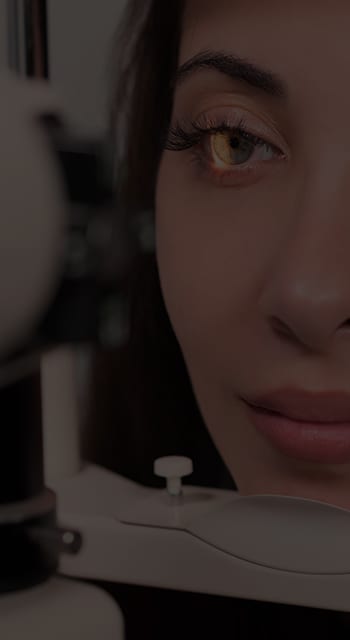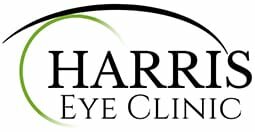Safeguarding Your Vision
At Harris Eye Clinic, we believe in proactive eye care. We are committed to early detection, accurate diagnosis, and effective management of various eye diseases, prioritizing optimal health and clear vision throughout your life.
Through consistent eye exams, our team strives to help preserve your long-term vision whether you’re dealing with cataracts, glaucoma, age-related macular degeneration (AMD), or diabetic eye diseases.
Contact us to schedule your appointment today and get a head start on eye disease management.
Request AppointmentEmbracing New Technologies
Our team is constantly seeking innovative technologies to enhance our diagnostic and treatment capabilities. We are excited to showcase these advancements and provide our patients with eye care solutions tailored to their unique needs.
We use diagnostic technology during our eye exams to capture the details of your eyes before preparing your treatment plan.
Our Diagnostic Technology
Harris Eye Clinic is equipped with a range of imaging equipment and diagnostic technology that helps us diagnose and manage common eye diseases and other conditions, such as glaucoma, diabetic retinopathy, cataracts, and AMD.
Our diagnostic technology includes optomap, OCT, and more to help our team detect signs of eye disease early. Early detection allows our team to get a head start on preparing a personalized treatment method for your needs.
Optos with Fundus Photography
Optos with fundus photography technology can capture panoramic images of your retina, allowing for a detailed examination of the back of your eye for potential signs of disease.
Optos Optomap
The optomap wide-field imaging system provides a comprehensive view of your retina, aiding in the detection of various conditions like macular degeneration and glaucoma.
ERG with LKC Technologies
ERG (electroretinography) can evaluate the electrical activity of your retina, helping diagnose glaucoma and assess diabetic eye health.
ERG can help detect potential issues with your retina even before structural changes become clear, helping our team get started on treatment early.
OCT with OptoVue
OCT (optical coherence tomography) can provide high-resolution cross-sectional images of your retina and optic nerve, enabling early detection of glaucoma, macular degeneration, and other conditions.
HVF by Zeiss
The Humphrey visual field analyzer (HVF) measures your peripheral vision, aiding in the diagnosis and monitoring of glaucoma. Visual field testing is used to help us see what you see (and what you do not see).
People with glaucoma typically need a threshold visual field test performed at least once a year.
The Different Forms of Eye Disease & Other Conditions
Patient education is a big part of what we do here at Harris Eye Clinic. Eye diseases and other conditions can affect your eye health and vision in a number of different ways.
By exploring different eye diseases and conditions with you, we can make you aware of some of the early warning signs. This can help you understand your risks for certain conditions and learn why regular eye exams are important.
Our team works to address potential eye issues early—before your vision and eye health are compromised.
Diabetes can increase your risk of developing eye diseases like glaucoma, cataracts, and diabetic retinopathy. Diabetic retinopathy is a primary vision-loss concern for those with diabetes.
Glaucoma
Glaucoma is a group of eye conditions that cause damage to your optic nerve, which is responsible for sending visual information to your brain. Damage to your optic nerve can lead to vision loss and blindness if not detected and treated early.
There are different types of glaucoma, but most of them develop without noticeable symptoms and can lead to permanent vision loss if not caught and managed.
High intraocular pressure (IOP) can be a risk factor of glaucoma. We check for glaucoma in every single patient and offer iCare and Goldmann tonometry, which is an eye test that can detect changes in eye pressure long before you may be aware of them.
Cataracts
Cataracts develop when the normally clear lens of the eye becomes clouded, and can cause symptoms like blurry vision, dim or yellowed vision, and difficulty seeing at night.
Cataracts begin when proteins in your eye clump together, partially blocking light from reaching your retina, the thin layer of tissue that lines the back of your eye. They often occur due to natural age-related changes in the eyes.
If cataracts progress to a later stage and prevent you from going about your daily activities, such as reading or driving, we may recommend cataract surgery. We offer pre-cataract surgery evaluations and post-op care to support your health and vision.
Age-Related Macular Degeneration (AMD)
Age-related macular degeneration (AMD) is a progressive disease caused by damage to your macula, affecting your central vision. This damage can make daily activities like reading and driving much more difficult.
There are 2 common types of AMD:
- Dry AMD is the more common form of the disease and occurs in early, intermediate, and late stages. This form of AMD occurs when the macula thins with age.
- Wet AMD is the less common form of the disease and can cause faster and more severe vision loss. Wet AMD occurs when abnormal blood vessels grow in the back of the eye and damage the macula.
We use the AdaptDx Pro device to measure dark adaptation speed, a key indicator of early AMD, even before visible signs like drusen appear.
The AdaptDx test measures the time it takes for your vision to adjust to darkness. During the test, you will wear a headset and press a button each time you see a flashing light.
Diabetic Eye Diseases
Diabetic retinopathy can cause damage to the blood vessels in the retina. While the condition can initially progress without symptoms, as it advances, it can cause:
- Blurry vision
- Vision loss
- Trouble seeing at night
- Black spots or holes in your vision
We use OCT and other diagnostic technology during diabetic eye exams to assist with the early detection of diabetic eye issues.
Our Treatment Options
We offer a range of treatment and management options for various eye diseases, including:
- iCare and Goldmann applanation tonometry: These instruments measure intraocular pressure, a crucial factor in glaucoma management.
- SLT laser trabeculoplasty: This minimally invasive laser procedure can help lower intraocular pressure for some glaucoma patients.
- Optometric lasers and injections: We have the capability to perform laser procedures to treat glaucoma and assist with post-cataract surgery.
- Light adjustable lenses: We work closely with surgeons to offer light-adjustable lenses, providing patients with enhanced vision control after cataract surgery.
Protecting Your Long-Term Vision
Protecting your vision is our priority. Schedule your appointment at Harris Eye Clinic today to discuss your eye health concerns and explore personalized treatment options for optimal vision and long-term well-being.
Request AppointmentVisit Us Today
You can find us on the corner of Linwood Drive and West Mueller. There’s plenty of parking available around the building.
Our Address
- 901 Linwood Dr.
- Paragould, AR 72450
Contact Information
- Phone: 870-239-2251
- Email: [email protected]
Our Hours
- Monday: 8:00 AM – 5:00 PM
- Tuesday: 8:00 AM – 5:00 PM
- Wednesday: 8:00 AM – 5:00 PM
- Thursday: 8:00 AM – 5:00 PM
- Friday: 8:00 AM – 5:00 PM
- Saturday: Closed
- Sunday: Closed

Why Choose Us?
Our team believes your vision is a precious gift, and we offer modern services to support your eyes. When you visit us, you can expect:

Warm and welcoming care:
Our experienced doctors and staff treat you and your family with consideration and respect.

Medical expertise:
Our skilled team leverages their in-depth knowledge and experience to deliver outstanding service.

Modern technology:
We use modern diagnostic technology and eye care advancements to identify and treat eye conditions, prioritizing your health and well-being.
Our Brands















